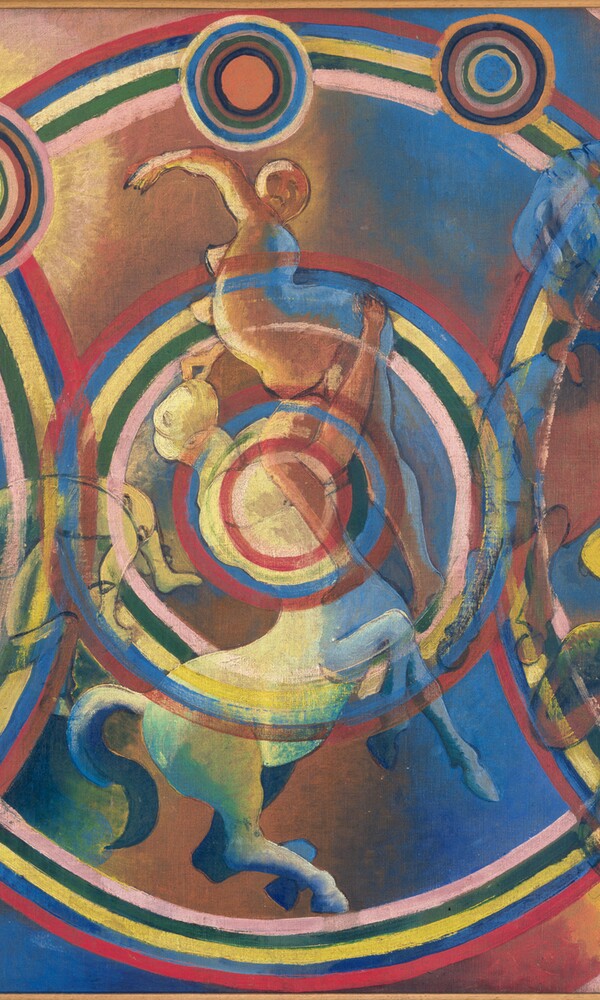On 19 May 1909, the Russian dancer Vaslaw Nijinsky (1889-1950) and the ballet company Les Ballets Russes had their European premiere in Paris. Nijinsky immediately became an unrivalled star on the stages of Europe, and ranks as the most important dancer of the twentieth century until today. Apart from his exceptional career as a dancer and choreographer, Nijinsky also created large numbers of coloured paintings and gouaches in 1918 and 1919. These works are here for the first time presented comprehensively. With finely-drawn coloured circles and ellipses and strongly-coloured plane surfaces, Nijinsky produced series of images where space and line are interwoven and rhythm and colour are transformed into a painted choreography of intense emotions.
Nijinsky’s highly impressive paintings are here for the first time presented in the context of modern art in Paris after 1910. Around 100 drawings by Nijinsky, mostly from the Foundation John Neumeier, will be juxtaposed with important paintings by the Russian artists Sonia Delaunay-Terk, Alexandra Exter, Vladimir Baranov-Rossiné, Léopold Survage and the Czech painter Frantisek Kupka. Like Nijinsky at times, these painters lived in Paris between 1910 and 1925 and worked on the themes of dance, rhythm and motion in a highly abstracted manner. Strong colours, arches, concentric circles, ellipses and sweeping curves dominate their compositions. The paintings are marked by a strong, rhythmic accent and call to mind a dance motion or the musical progression of a film sequence. In their dynamism the physical presence of the human figure on the canvas links up with the light, the shapes and the vibrations of the cosmos to build up to a stirring dance of colours.
The exhibition offers an entirely new perspective on the origins of abstraction from dance. It is a unique contribution to the worldwide events that mark the centenary of the Ballets Russes’ spectacular debut in Paris. The historic personality of Nijinsky, the outstanding dancer of the twentieth-century, comes alive in a separate section of the exhibition in photographs, posters, paintings and sculptures by leading artists of Nijinsky’s time, on loan from the private collection of John Neumeier.
